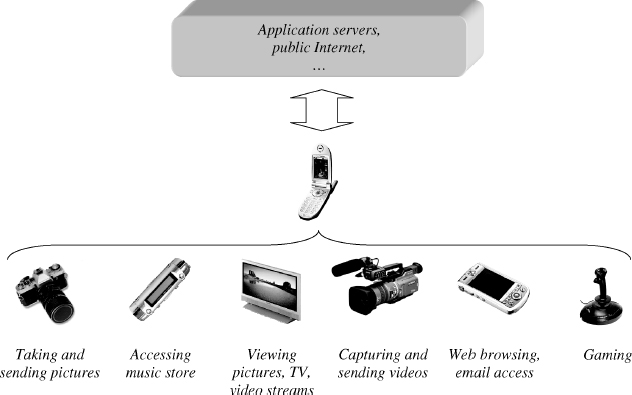2.6 The Terminal
2.6.1 The User Device Architecture
From the development of packet data services and support, mobile terminal integrate more and more features, as described in Figure 2.25. Because of the reduced size, supporting all applications on a single device may be too limiting to the end-user, for the following reasons:
- Limited man-to-machine interface: most of the time, only a small keypad is available or ‘direction pad’, limiting the possibilities for interaction with the device.
- Limited end-user experience caused by the poor audio quality or reduced display size.
- Limited storage capability.
- Limited battery life: supporting all features like radio transmission as well as colour display or headset powering is very consuming. All of this may quickly drain the batteries of a small device.
For these reasons, it may be of some interest to dissociate the provision of the service itself and the modem side of the service (this modem part relates to the pure data-transmission part of the terminal, including the ability to support high bit rate transmission and seamless mobility over a radio interface).

Figure 2.25 Mobile terminal and user services.
To answer this need, the standard has defined a flexible architecture for terminal realization. In this new model, all functions supported by a terminal are split between two elements: the MT (Mobile Terminal) and the TE (Terminal Equipment). ...
Get Evolved Packet System (EPS): The LTE and SAE Evolution of 3G UMTS now with the O’Reilly learning platform.
O’Reilly members experience books, live events, courses curated by job role, and more from O’Reilly and nearly 200 top publishers.

